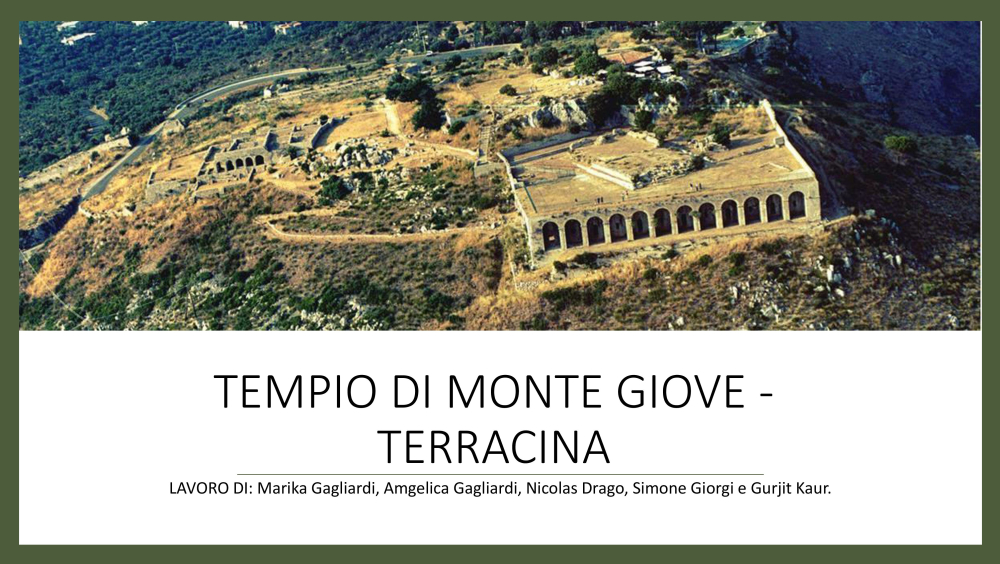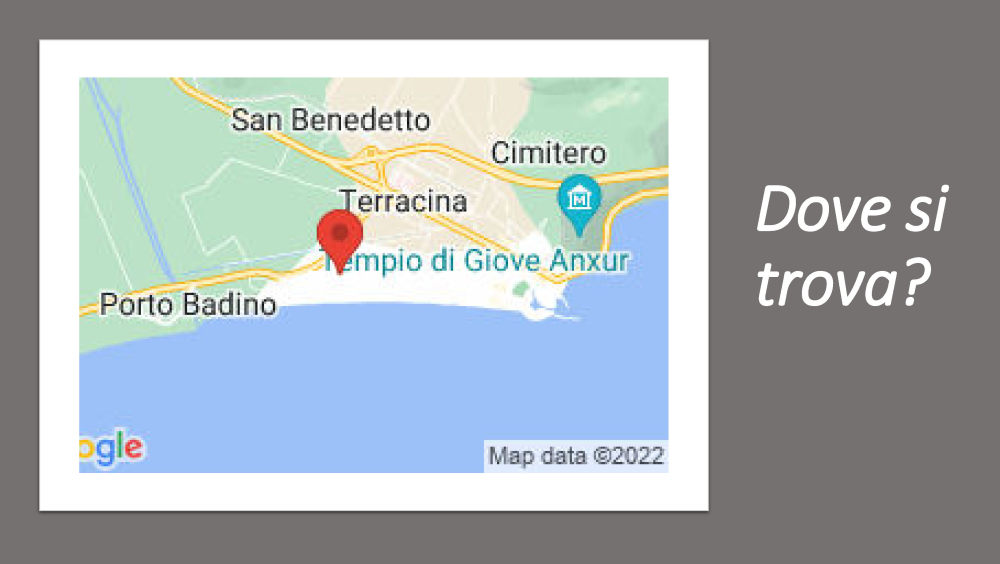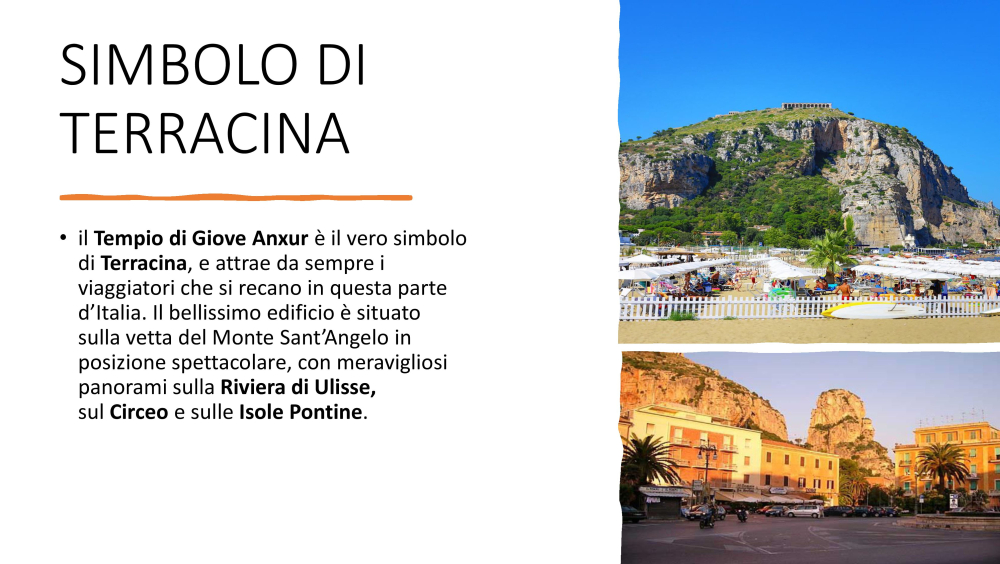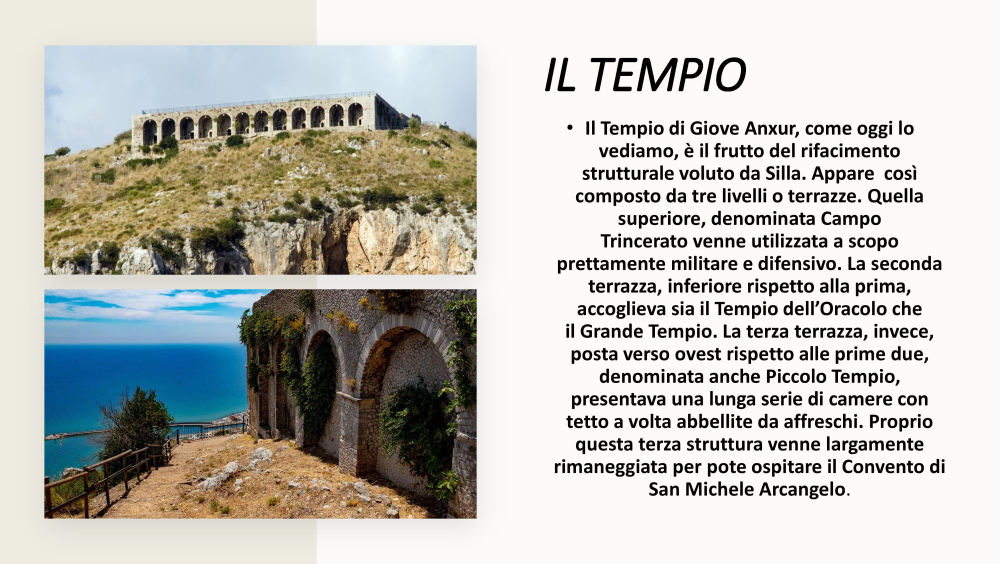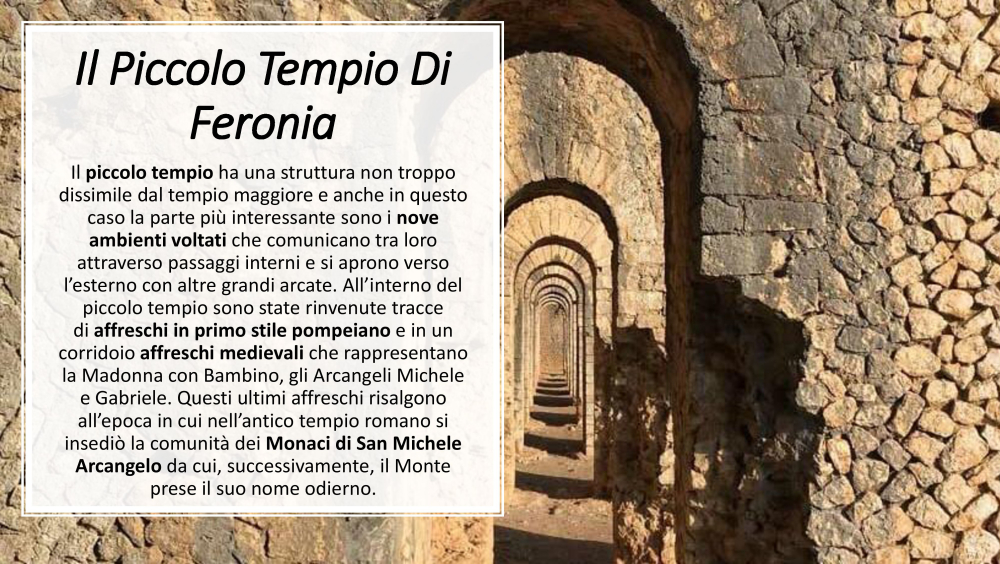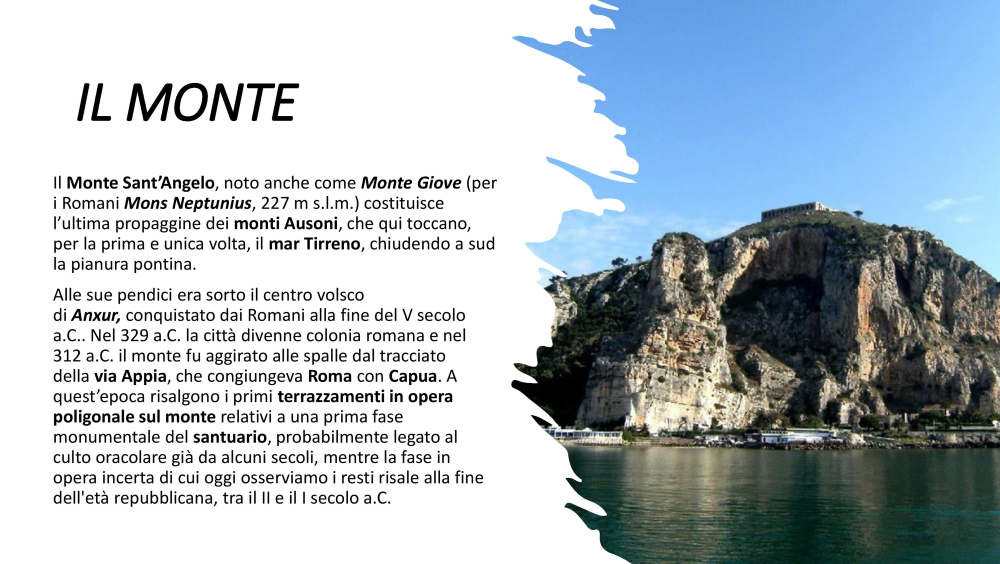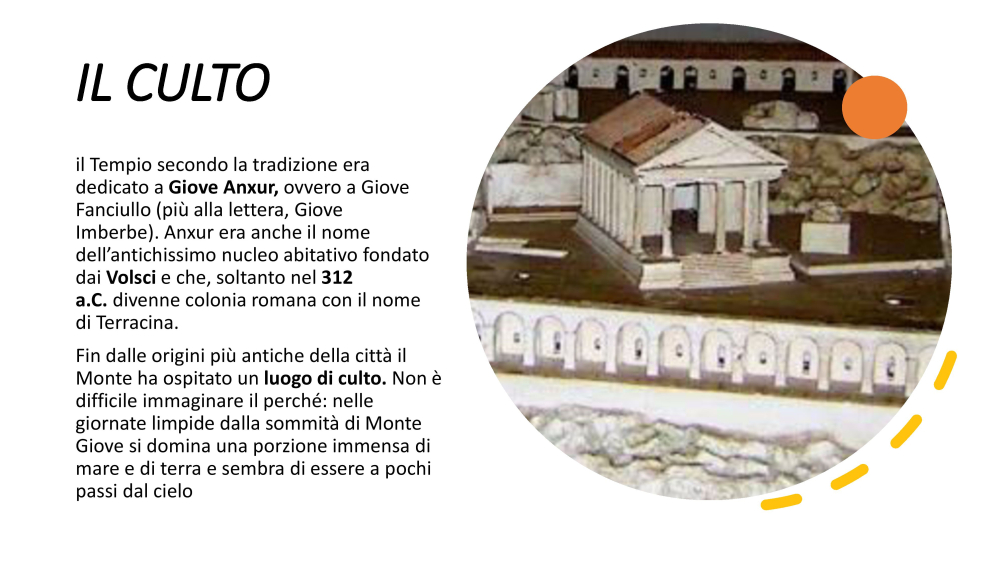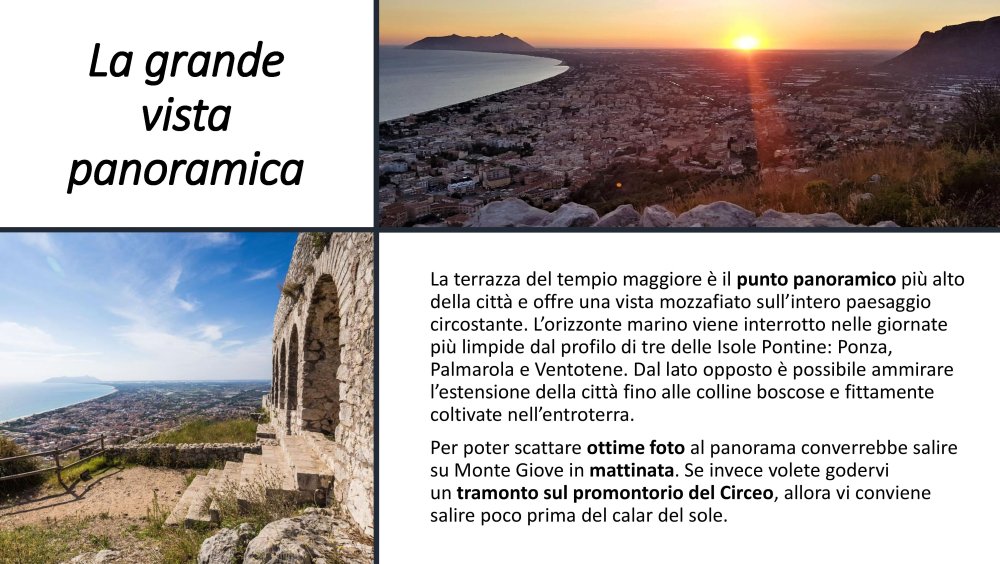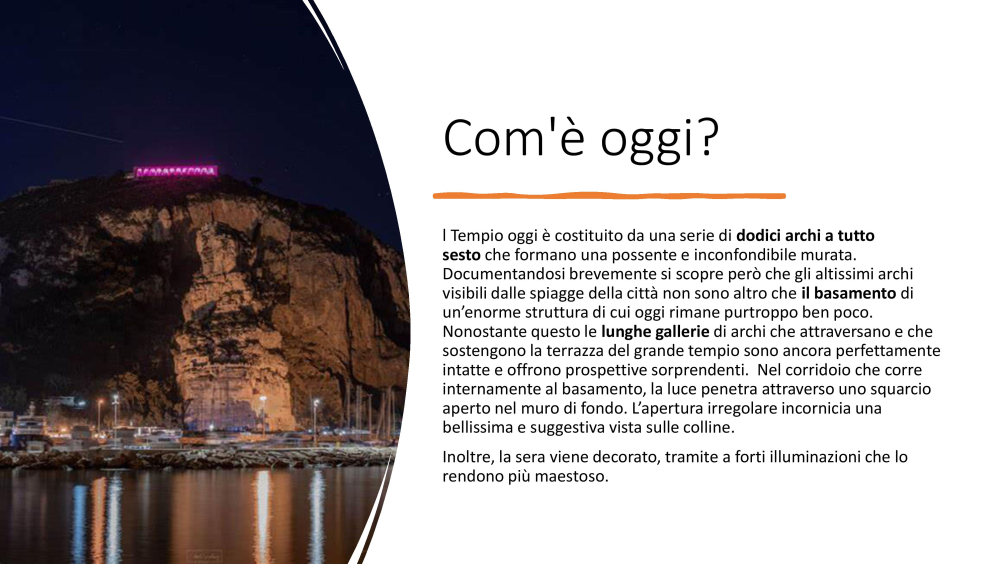IL TEMPIO DI GIOVE
1
Our presentation talks about Monte Giove located in Terracina , also known as a sign of the place, always attrac many tourists and is close to Monte Sant Angelo in a spectacular position, with wonderful views of the Ulysses Riviera, the Circeo and the Pontine Islands. The Volscian center of Anxur had arisen on its slopes, conquered by the Romans at the end of the 5th century BC. the city became a Roman colony and in 312 BC. the mountain was bypassed behind by the layout of the Via Appia, which connected Rome with Capua. The first terraces in polygonal work on the mountain date back to this period, relating to a first monumental phase of the sanctuary, probably linked to the oracular cult for some centuries already, while the phase in opus incertum whose remains we observe today dates back to the end of the republican, between the 2nd and 1st century BC.
The titular divinity of the cult practiced at the Great Temple is still a matter of debate, of which little more than the podium remains today on its famous terrace with twelve arches: in addition to the traditional identification with Iuppiter Anxur (child Jupiter), patron deity of the city, some scholars support the hypothesis that it is a female deity such as Venus Obsequens, on the basis of some inscriptions found in the area.
The monumental terrace also housed an "oracular rock", where, thanks to the ascent of sea currents, particular rites had to take place, two small cisterns, and the "oracular cave", spared from the cement work inside the "cryptoporticus" .
The so-called Small Temple (probably the oldest, around the middle of the 2nd century BC, with remains of 1st style paintings) has recently been attributed to the cult of the goddess Feronia, probably introduced in the region already at the time of the Volscan occupation in the 5th century BC This cult is also attested in other parts of the city: ancient sources mention the presence of a Fanum Feroniae (sacred wood) near Monte Leano. The area was definitively abandoned at the end of the 16th century, in conjunction with the depopulation of the city of Terracina due to various waves of epidemics. The first excavations date back to 1894, conducted by the local scholar Pio Capponi, followed by those conducted by Luigi Borsari two years later. Numerous and extraordinary were the finds found, including the famous crepundia (preserved in the National Roman Museum in the Palazzo Massimo in Rome), but also terracotta ex votos, bronze objects and glass paste doves, now lost due to the bombings and the looting that took place during and after the Second World War.
